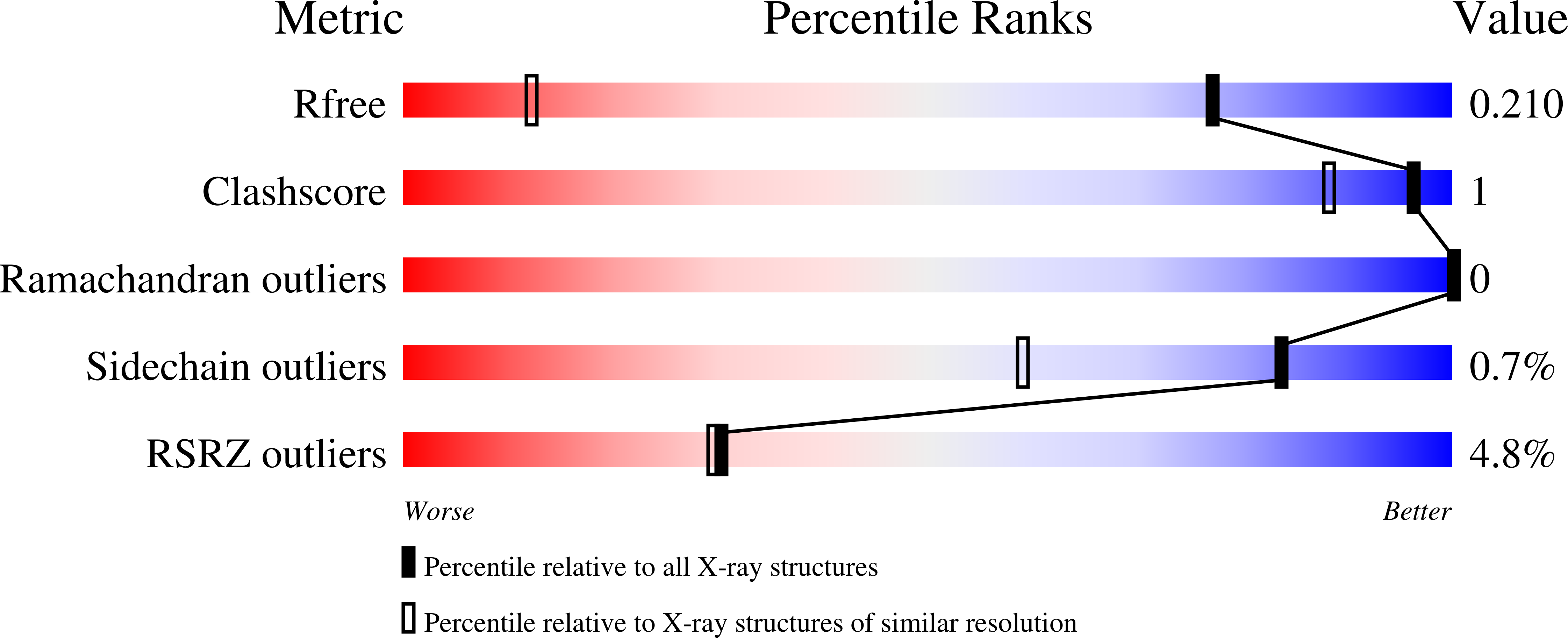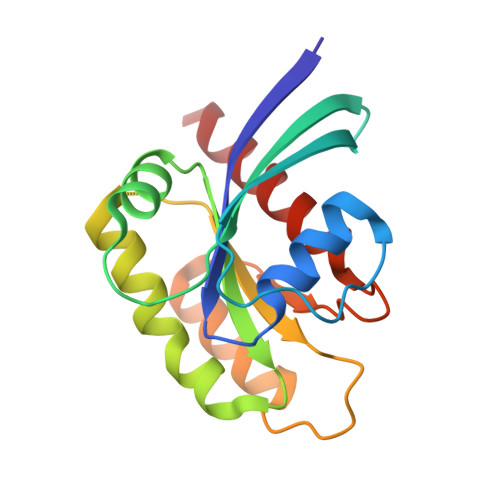Discovery, Preclinical Characterization, and Early Clinical Activity of JDQ443, a Structurally Novel, Potent, and Selective Covalent Oral Inhibitor of KRASG12C.
Weiss, A., Lorthiois, E., Barys, L., Beyer, K.S., Bomio-Confaglia, C., Burks, H., Chen, X., Cui, X., de Kanter, R., Dharmarajan, L., Fedele, C., Gerspacher, M., Guthy, D.A., Head, V., Jaeger, A., Nunez, E.J., Kearns, J.D., Leblanc, C., Maira, S.M., Murphy, J., Oakman, H., Ostermann, N., Ottl, J., Rigollier, P., Roman, D., Schnell, C., Sedrani, R., Shimizu, T., Stringer, R., Vaupel, A., Voshol, H., Wessels, P., Widmer, T., Wilcken, R., Xu, K., Zecri, F., Farago, A.F., Cotesta, S., Brachmann, S.M.(2022) Cancer Discov 12: 1500-1517
- PubMed: 35404998
- DOI: https://doi.org/10.1158/2159-8290.CD-22-0158
- Primary Citation of Related Structures:
7R0M, 7R0N, 7R0Q - PubMed Abstract:
Covalent inhibitors of KRASG12C have shown antitumor activity against advanced/metastatic KRASG12C-mutated cancers, though resistance emerges and additional strategies are needed to improve outcomes. JDQ443 is a structurally unique covalent inhibitor of GDP-bound KRASG12C that forms novel interactions with the switch II pocket. JDQ443 potently inhibits KRASG12C-driven cellular signaling and demonstrates selective antiproliferative activity in KRASG12C-mutated cell lines, including those with G12C/H95 double mutations. In vivo, JDQ443 induces AUC exposure-driven antitumor efficacy in KRASG12C-mutated cell-derived (CDX) and patient-derived (PDX) tumor xenografts. In PDX models, single-agent JDQ443 activity is enhanced by combination with inhibitors of SHP2, MEK, or CDK4/6. Notably, the benefit of JDQ443 plus the SHP2 inhibitor TNO155 is maintained at reduced doses of either agent in CDX models, consistent with mechanistic synergy. JDQ443 is in clinical development as monotherapy and in combination with TNO155, with both strategies showing antitumor activity in patients with KRASG12C-mutated tumors. JDQ443 is a structurally novel covalent KRASG12C inhibitor with a unique binding mode that demonstrates potent and selective antitumor activity in cell lines and in vivo models. In preclinical models and patients with KRASG12C-mutated malignancies, JDQ443 shows potent antitumor activity as monotherapy and in combination with the SHP2 inhibitor TNO155. This article is highlighted in the In This Issue feature, p. 1397.
Organizational Affiliation:
Novartis Institutes for BioMedical Research, Basel, Switzerland.

















